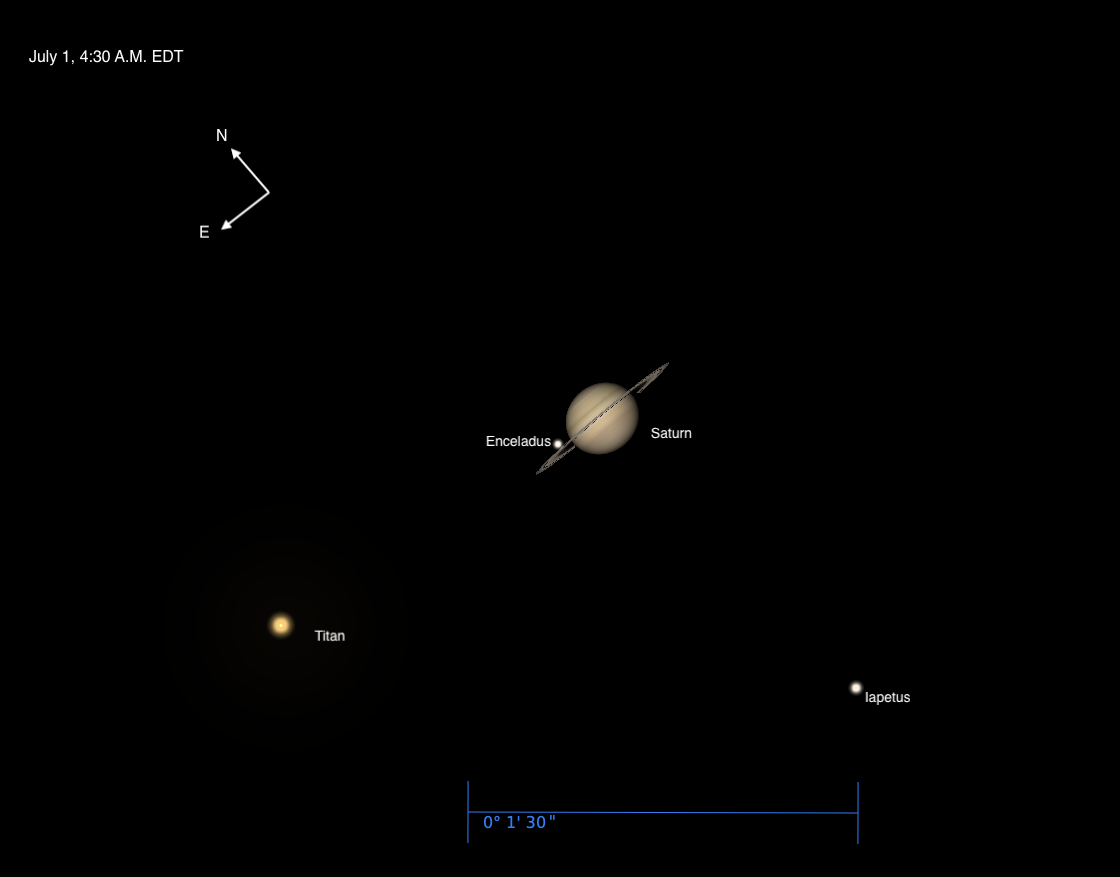Saturn’s two-toned moon Iapetus reaches superior conjunction this morning, just south of the ringed world.
Iapetus lies due south of Saturn this morning, while Titan lies to the east. Credit: Stellarium/Oleg Pluton (CC BY 4.0)
Visible in the early-morning sky today, Saturn’s two-toned moon Iapetus reaches superior conjunction just 1.4′ due south of Saturn. The proximity makes the now-11th-magnitude moon easier to find, as it spends much of its time far east or west of Saturn, several arcminutes from the planet.
Try your luck about two hours before sunrise, while the sky is still dark and the dim moon will be easiest to see against the background. At that time, 1st-magnitude Saturn stands some 30° high in the southeast, easy to find in southern Pisces below the Circlet asterism. Center your scope on the ringed planet to find Iapetus less than 2’ south of the disk; brighter Titan, shining around 8th magnitude, is roughly the same distance east of the planet. Observers with larger scopes may also catch Enceladus, around 12th magnitude, just northeast of the planet’s equator, north of the rings. This moon can be difficult to see because of its proximity to the bright rings, but since they’re tipped such that they appear relatively thin, you may have better luck. Enceladus is heading behind the planet, however, and disappears shortly before 5 A.M. EDT. Meanwhile, 10th-magnitude Tethys reappears from occultation behind Saturn’s southeastern limb around 4:35 A.M. EDT — see if you’re able to catch the moment it winks back into view.
Sunrise: 5:35 A.M.
Sunset: 8:33 P.M.
Moonrise: 12:11 P.M.
Moonset: 12:02 A.M.
Moon Phase: Waxing crescent (39%)
*Times for sunrise, sunset, moonrise, and moonset are given in local time from 40° N 90° W. The Moon’s illumination is given at 12 P.M. local time from the same location.
For a look ahead at more upcoming sky events, check out our full Sky This Week column.
